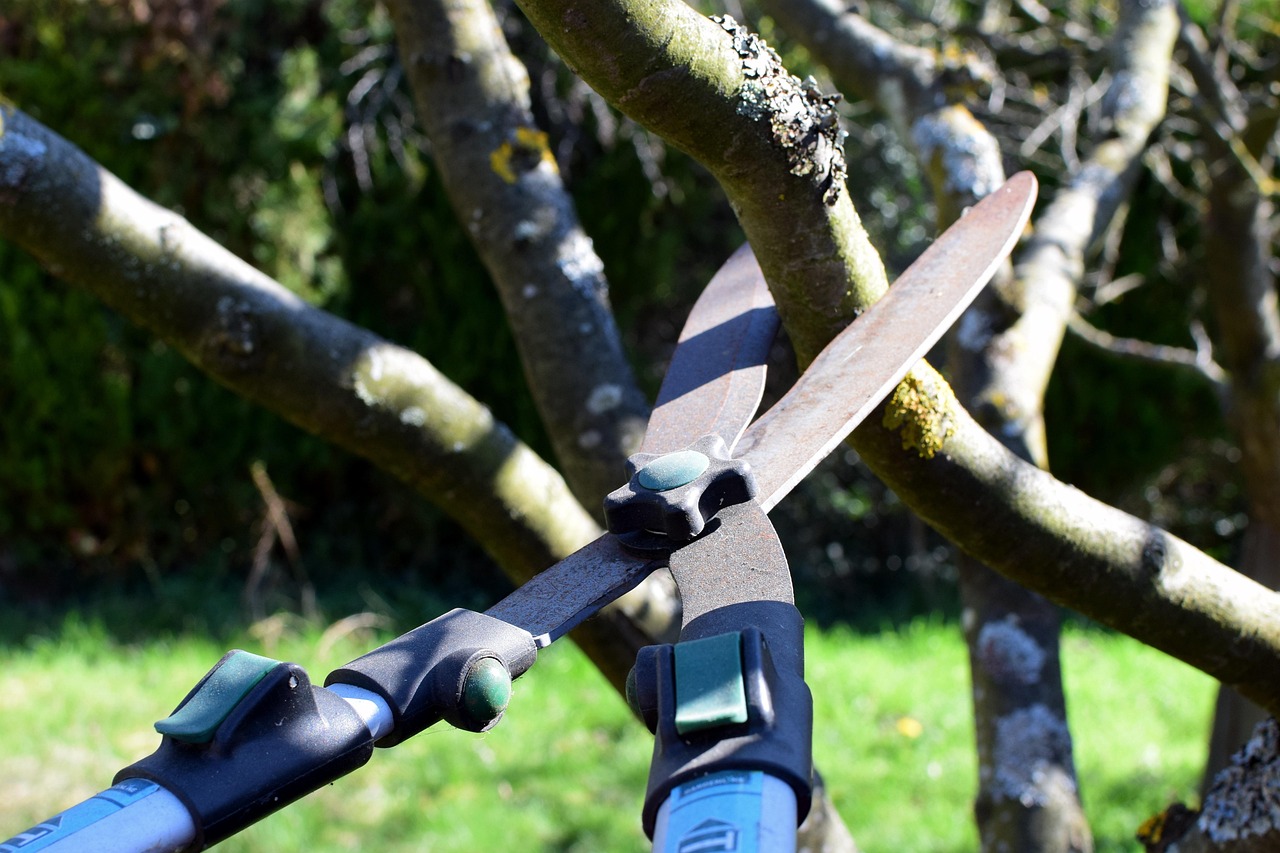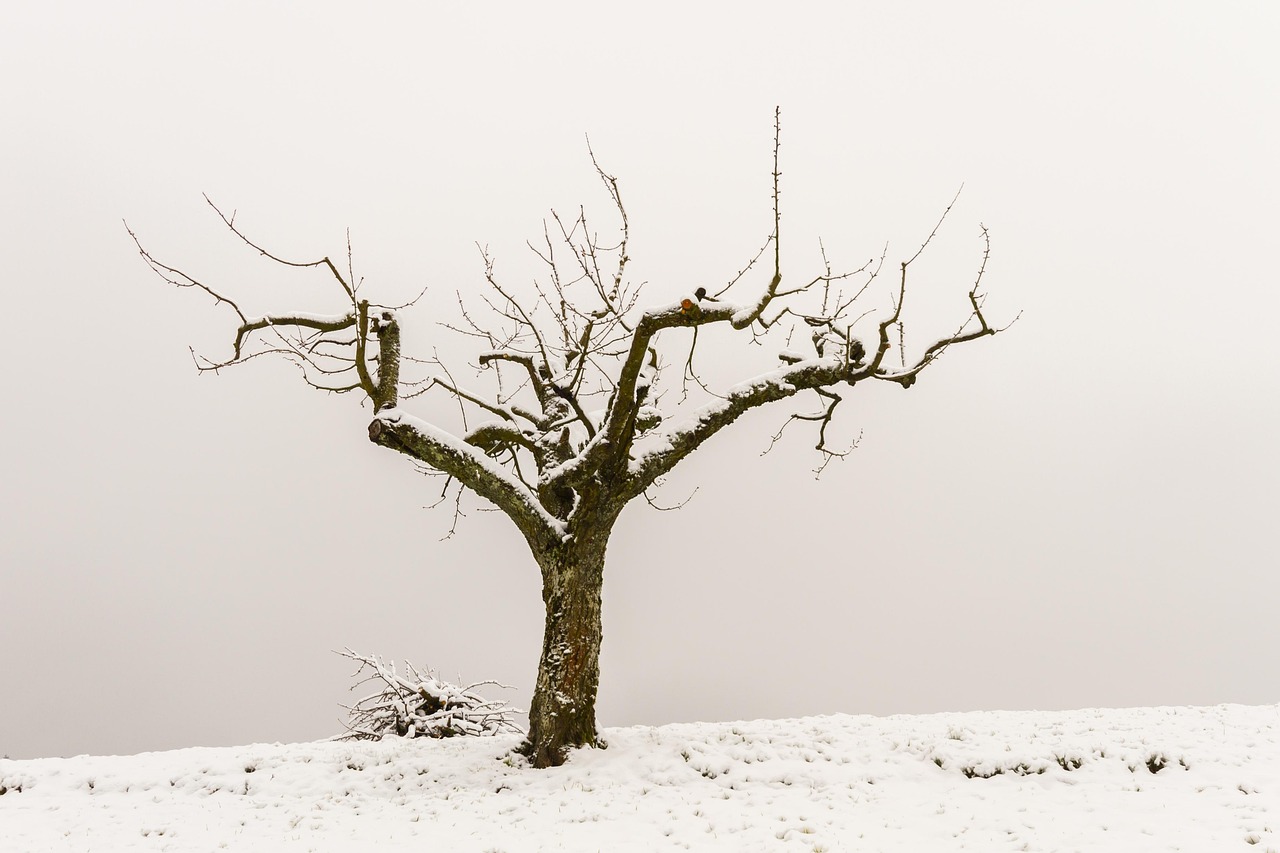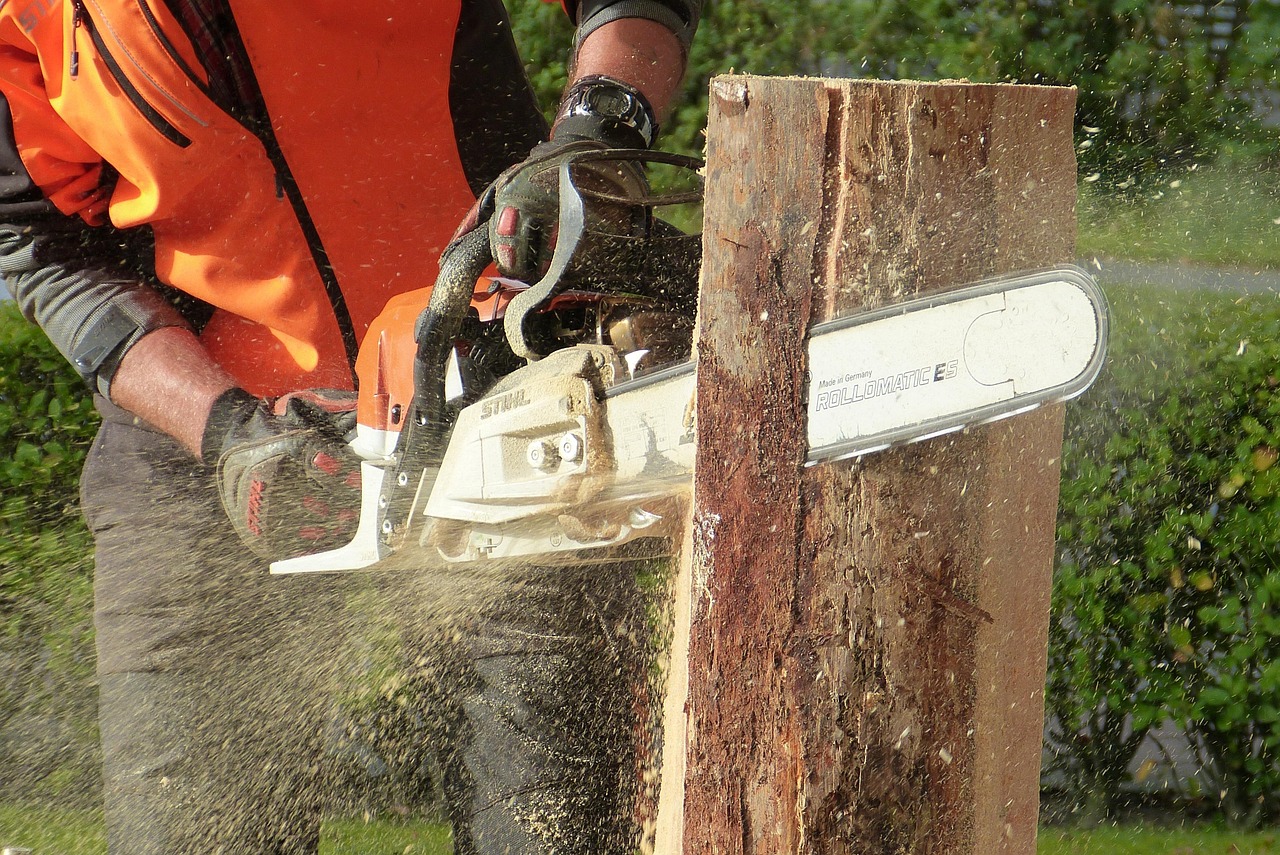Safe tree pruning practices require knowledge of proper techniques, tools, and timing. Understanding tree biology, safety precautions, and environmental considerations is crucial for maintaining tree health and ensuring the safety of people and property.
Tree pruning is an essential part of maintaining healthy trees. It involves removing specific parts of a tree, such as branches, to improve its structure and promote growth. However, pruning can also pose risks if not done safely and correctly. Improper techniques can lead to damage to the tree or even injury to the person doing the pruning. Therefore, understanding the key considerations for safe tree pruning is vital.

When it comes to pruning, timing is everything. Different trees have different growth patterns, and knowing when to prune can enhance overall health and aesthetics. Generally, late winter or early spring is considered the best time for most species. This period allows trees to heal quickly as they enter their growing season.
Proper tools are also critical for effective and safe pruning. Using clean, sharp tools minimizes damage to the tree. Here are some common tools used in tree pruning:
- Pruning Shears: Ideal for cutting small branches.
- Loppers: Designed for thicker branches.
- Saws: Useful for larger limbs.
- Chainsaws: Necessary for heavy-duty work on large trees.
In addition to using the right tools, safety measures should be a top priority. Personal protective equipment (PPE) includes gloves, safety glasses, and helmets. These items help protect against potential hazards such as falling branches or debris.

Understanding Tree Biology
Before you start pruning, it’s crucial to have a basic understanding of how trees grow and respond to pruning. Trees have different growth patterns and structures that can affect how they should be pruned. For instance, some trees may have a central leader, while others may have multiple leaders or a more sprawling shape.
Knowing about tree biology can help you make informed decisions about how much to prune and where to make cuts. Here are some key biological concepts to consider:
| Concept | Description |
|---|---|
| Growth Hormones | Pruning affects growth hormones in trees, which can influence how a tree develops after pruning. |
| Cambium Layer | This is the part of the tree that produces new growth. Making cuts too deep can damage this layer. |
| Callus Formation | Trees create callus tissue over cuts to heal. Understanding this process helps in making appropriate cuts. |
The way you prune can significantly affect the health of the tree. For example, improper cuts can lead to disease or pests taking hold. On the other hand, correct cuts can stimulate new growth and improve air circulation within the canopy.

Pruning Techniques
Different techniques can be employed based on the type of tree and the desired outcome. Some common techniques include:
- Thinning: This involves removing selected branches to improve light penetration and air circulation.
- Reduction: This technique reduces the size of a tree while maintaining its shape.
- Raising: This entails removing lower branches to provide clearance beneath the tree.
- Tip Pruning: This technique involves cutting back the tips of branches to encourage bushier growth.
Each technique serves a unique purpose and can impact the tree’s overall health. It is essential to choose the right method for the specific species and situation. Additionally, awareness of the tree’s natural shape and growth habit plays a significant role in selecting an appropriate pruning technique.
As you prepare for your pruning project, consider your skill level and whether you need professional help. For larger trees or complicated jobs, hiring an arborist can ensure safety and effectiveness.

Taking these considerations seriously will help you achieve better results while keeping yourself and your trees safe during the pruning process.
Safety Precautions for Tree Pruning
Safety should always be the top priority when it comes to tree pruning. The potential risks involved in this task can range from minor injuries to serious accidents. Understanding safety precautions can help minimize these risks significantly. Here are essential safety measures to consider before starting your pruning project.
Personal Protective Equipment (PPE)
Using appropriate personal protective equipment is crucial for ensuring your safety while pruning trees. Here are some essential items to consider:
- Safety Glasses: Protect your eyes from falling debris.
- Hard Hat: Provides head protection from falling branches.
- Gloves: Protect your hands from cuts and scrapes.
- Steel-Toed Boots: Offer foot protection against heavy objects.
- High-Visibility Clothing: Ensures you are easily seen, especially in busy areas.
These items can help reduce the risk of injuries and keep you safe during the pruning process. Always check your equipment before use to ensure it is in good condition.
Assessing the Worksite
Before beginning any pruning work, it is vital to assess the area around the tree. Consider the following factors:
- Clearance from Power Lines: Ensure that no branches are near electrical lines. If they are, contact a professional.
- Ground Conditions: Check for uneven or slippery surfaces that could lead to falls.
- Surrounding Structures: Ensure that there are no structures, vehicles, or people nearby that could be harmed by falling branches.
- Weather Conditions: Avoid pruning during inclement weather, such as high winds or rain. These conditions can increase the risk of accidents.
Taking the time to assess the worksite thoroughly can prevent many avoidable accidents and enhance safety during the project.
Choosing the Right Tools
The tools you choose for tree pruning can greatly influence both safety and effectiveness. Using the appropriate tools for the job can make tasks easier and safer. Here is a list of common pruning tools and their uses:
| Tool | Use |
|---|---|
| Hand Pruners | Ideal for small branches up to ¾ inch thick. |
| Loppers | Suitable for branches up to 2 inches thick. |
| Saws | Used for thicker branches; available in both manual and powered versions. |
| Chainsaw | Essential for cutting larger limbs; requires extra caution and proper training. |
| Pole Pruner | Allows you to reach high branches without a ladder. |
Always ensure that your tools are clean and sharp. Dull tools can lead to jagged cuts, which can harm the tree and increase the risk of injury. Regular maintenance of your equipment is key to safe and effective pruning.
Tree Pruning Techniques for Safety
Using proper techniques while pruning not only helps maintain tree health but also ensures safety throughout the process. Here are some important techniques to follow:
The Three-Cut Method
This method is particularly useful for cutting larger branches without causing damage to the tree. It involves three specific cuts:
- The Undercut: Make a small cut on the underside of the branch about one-third of the way through. This prevents the bark from tearing when the branch falls.
- The Top Cut: Make a second cut on the top side of the branch, a few inches further out than the first cut. This will remove most of the weight from the branch.
- The Final Cut: Remove any remaining stub by cutting just outside the branch collar (the swollen area where the branch meets the trunk). This helps in healing and minimizes damage.
Ladder Safety
If you need to use a ladder to reach high branches, follow these guidelines:
- Choose a Stable Ladder: Use a ladder that is appropriate for your height and weight requirements.
- Positioning: Ensure the ladder is on stable ground and at a proper angle (about 75 degrees).
- Never Overreach: Always keep your body centered on the rungs. Overreaching can lead to falls.
- Have a Spotter: It’s helpful to have someone hold the base of the ladder while you work.
By adhering to these safety practices and techniques, you can enjoy a productive and safe tree pruning experience. Understanding each aspect of tree pruning builds confidence and skills, ensuring that both you and your trees remain healthy and safe.
Timing Your Pruning Efforts
The timing of tree pruning is critical for both the health of the tree and the safety of the person doing the pruning. Different trees have specific growth cycles and respond better to pruning at certain times of the year. Understanding when to prune can enhance recovery and growth.
Seasonal Considerations
Generally, the best time to prune most trees is during late winter or early spring before new growth begins. However, some species have different needs:
- Deciduous Trees: Best pruned in late winter while they are still dormant. This minimizes stress and encourages healthy growth.
- Evergreen Trees: Can be pruned in late spring or early summer after new growth appears.
- Flowering Trees: Prune spring-flowering trees right after blooming to avoid cutting off next season’s buds. Summer-flowering trees can be pruned in late winter or early spring.
Timing is essential not only for the tree’s health but also for your safety. Pruning when trees are dormant reduces the risk of accidents related to falling branches caused by weak structures.
Environmental Factors
Weather conditions can also impact the timing of your pruning activities. Here are some environmental considerations:
- Wet Conditions: Avoid pruning when the ground is wet or muddy, as this can create slippery surfaces and increase the chances of falls.
- Windy Days: High winds can make it difficult to control falling branches and can lead to accidents. Choose calm days for pruning.
- Extreme Temperatures: Avoid extreme heat or cold, as these conditions can be hazardous and uncomfortable for prolonged work.
Proactive assessment of these environmental factors will help ensure a safer and more effective pruning experience.
Tree Health Considerations
Maintaining tree health is a significant aspect of safe pruning practices. Understanding how pruning affects tree vitality will help you make informed decisions.
Signs of Tree Health Issues
Before you begin pruning, inspect the tree for any signs of health issues. Look for the following:
- Dead or Dying Branches: These can pose a risk as they may fall unexpectedly.
- Pests or Disease: Inspect for signs such as holes, webs, or unusual markings on leaves and branches.
- Crown Shape: An uneven crown may indicate structural issues that need addressing through proper pruning techniques.
- Fungal Growth: Mushrooms or conks at the base of a tree may indicate decay.
If you notice any of these signs, consider consulting with a professional arborist. They can provide advice on whether to proceed with pruning or if other interventions are necessary.
The Importance of Clean Cuts
Making clean cuts is vital for promoting tree health after pruning. Here are some tips for achieving clean cuts:
- Use Sharp Tools: Dull tools can tear bark and damage the tree.
- Avoid Tearing: Ensure that your cuts are made smoothly without forcing the tool through the wood.
- Cut at an Angle: When making cuts, angle them slightly downward to prevent water accumulation on the cut surface.
Taking care with your cuts reduces the risk of infection and promotes faster healing, which is crucial for maintaining the tree’s overall health.
Mature Trees vs. Young Trees
The approach to pruning differs significantly between mature and young trees. Understanding these differences is essential for safe and effective practices.
Younger Trees
Younger trees benefit from formative pruning, which helps establish a strong structure. Consider the following:
- Aim for a Single Leader: Encourage a central leader to promote vertical growth.
- Selective Pruning: Remove competing branches to avoid structural issues later in life.
- Maintain Balance: Ensure even spacing among branches to promote a uniform shape.
Mature Trees
Mature trees require different strategies to maintain health and safety:
- Crown Thinning: Remove excess branches to improve light penetration and air circulation.
- Deadwooding: Regularly remove dead or diseased branches to prevent hazards.
- Avoid Over-Pruning: Excessive pruning can stress mature trees, so it is important to follow guidelines carefully.
Catering your pruning techniques to the age and condition of the tree ensures that you support its health while keeping safety in mind.
Special Considerations for Specific Tree Types
When it comes to tree pruning, it’s important to recognize that different species have unique requirements. Understanding these differences can lead to safer and more effective pruning practices. Here are some specific considerations for a few common tree types:
Fruit Trees
Pruning fruit trees requires particular attention to ensure healthy fruit production. Here are key points to consider:
- Open Center Pruning: This technique encourages a vase-like shape that allows sunlight to penetrate, enhancing fruit development.
- Timing: Most fruit trees should be pruned in late winter or early spring, just before the growing season begins.
- Remove Suckers: Eliminate any suckers that grow from the base or roots, as these can divert energy away from fruit production.
Ornamental Trees
Ornamental trees often require a focus on aesthetics and structure:
- Maintain Shape: Prune to maintain the natural shape of the tree while encouraging healthier growth.
- Flowering Considerations: For flowering trees, prune after blooming to avoid cutting off next year’s flowers.
- Thin Crowns: Ensure air circulation within the crown to prevent diseases.
Shade Trees
Shade trees contribute significantly to landscape beauty and environmental benefits. When pruning these trees, keep in mind:
- Height Management: Regularly prune lower branches to maintain clearance for people and structures.
- Crown Cleaning: Remove any dead or diseased branches to enhance health and aesthetics.
- Balance and Structure: Aim for a balanced shape that enhances stability, especially in mature trees.
The Role of Professional Arborists
While many individuals can safely prune their trees, there are situations where hiring a professional arborist is wise. Professional arborists possess the expertise and equipment necessary for complex pruning tasks. Here are some reasons why you might consider enlisting their services:
- Complex Tree Structures: If a tree has multiple leaders or requires extensive pruning, an arborist can assess and execute the work safely.
- Pest and Disease Management: Professionals can identify signs of disease or pest infestations and recommend appropriate treatments.
- Insurance and Liability: Arborists often carry insurance, protecting you from liability in case of accidents during pruning.
Choosing a certified arborist ensures that your trees are cared for by someone with the knowledge and experience required to keep them healthy and safe.
Final Thoughts
Safe tree pruning practices are essential for maintaining the health of trees and ensuring the safety of those who care for them. Knowledge of proper techniques, tools, timing, and species-specific considerations all contribute to effective pruning. By prioritizing safety through personal protective equipment, site assessments, and understanding tree biology, individuals can minimize risks associated with tree maintenance.
Pruning is not merely about cutting branches; it’s an art that requires understanding tree health, growth patterns, and environmental factors. Whether you choose to take on pruning yourself or hire a professional, being informed will empower you to make the best decisions for your trees.
In summary, successful tree pruning enhances not only the aesthetic appeal of your landscape but also contributes significantly to environmental health. Embrace the knowledge and skills associated with safe tree pruning practices to enjoy beautiful, healthy trees for years to come.
